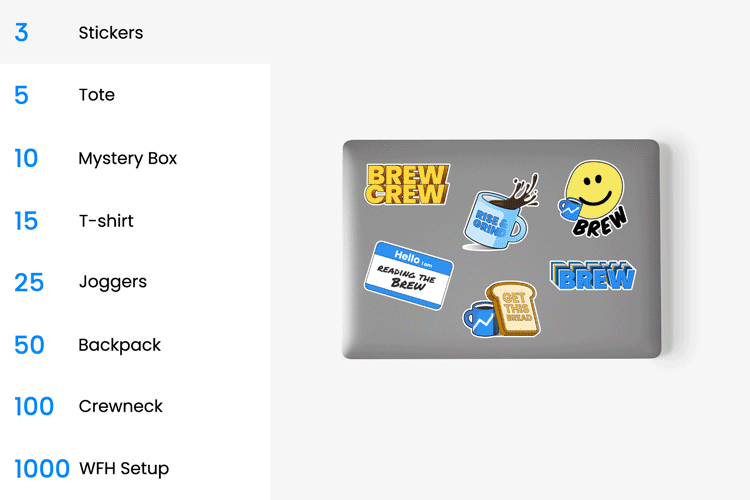Happy Monday! Ahead of tonight’s college football playoff national championship matchup between the Washington Huskies and Michigan Wolverines, Healthcare Brew (OK, mostly Shannon) is reminding the Ohio State and Oregon Ducks fans out there to practice self-care during this difficult time. Light some candles, journal, and listen to the soothing sounds of the 2015 CFP. If you end up crying into a pint of Jeni’s, we won’t judge you.
In today’s edition:
 Get techy with it Get techy with it
🪧 Say it with me: Strike!
 Make that money Make that money
—Shannon Young, Maia Anderson
|
|
Robert Deyrail/Getty Images
Surgeries have come a long way since the early ’90s, when laparoscopy—a technique in which physicians operate via tools inserted through small incisions (often paired with cameras)—took operating rooms by storm.
Robotic arms and other high-tech equipment are becoming more common in surgical suites, physicians are using 3D printing to prepare for more difficult procedures, and some surgeons are even pioneering ways to operate on patients who are hundreds of miles away.
The advancements, which show no signs of slowing down, offer a preview of what future patients may be able to expect when they need a surgical procedure, and how hospitals would need to design and prepare their operating rooms (ORs) to optimize that experience.
Keep reading here.—SY
Do you work in healthcare or have information about the industry that we should know? Email Shannon at [email protected]. For confidential conversations, ask Shannon for her number on Signal.
|
|
The rise of social media has seen an increasing number of healthcare fads, encompassing diets, exercise regimens, and now prescription drugs. Such is the case with Ozempic, the diabetic medication serving as social media’s newest hot topic because of its weight loss side effects.
We break down the rise of the new “it” drug and how its popularity is impacting patients’ health. Read the full report here.
|
|
Nadya Ustyuzhantseva/Getty Images
If there’s one word that could summarize healthcare in 2023, it’s “strike.”
From nurses to dialysis workers, a broad spectrum of healthcare workers participated in labor activity last year, with at least 27 strikes taking place at hospitals and health systems across the US, according to Healthcare Dive’s strike tracker.
And experts don’t think the labor activity is slowing down anytime soon.
“Workers are feeling fired up and emboldened, and really stepping into their power,” Renée Saldaña, a spokesperson for Service Employees International Union–United Healthcare Workers West (SEIU-UHW), which represents over 100,000 healthcare workers, told Healthcare Brew. “What we can see is workers really starting to stand up for themselves and for their patients for better working conditions […] I don’t think that’s going to stop.”
Keep reading here.—MA, SY
Do you work in healthcare or have information about the industry that we should know? Email Maia at [email protected]. For confidential conversations, ask Maia for her number on Signal.
|
|
Darren415/Getty Images
New York hospitals generated $201 billion in economic activity in 2022—about 10% of the state’s $2 trillion gross domestic product for that same year, according to a recent report.
A December 2023 Healthcare Association of New York State (HANYS) analysis found that hospitals and health systems had major impacts on their local economies, generating an estimated 859,000 jobs, $56.4 billion in salaries and benefits, $30.6 billion in tax dollars, and at least $16.1 billion in community investments. And that’s up from previous years’ totals of $192 billion in economic activity and 856,000 jobs, HANYS estimated in a January 2023 report.
In addition to the economic effects, HANYS found that New York health systems and hospitals served nearly 58 million people in outpatient settings, 7.8 million in emergency departments, and 2.2 million in inpatient units in 2022. The facilities also delivered 207,000 babies.
Keep reading here.—SY
|
|
Francis Scialabba
Today’s top healthcare reads.
Stat: Researchers believe about 17,000 people in six countries may have died from taking hydroxychloroquine during the first Covid-19 wave. (Politico)
Quote: “Whooping cough can be very serious for infants too young to be vaccinated, which is why we are alerting both medical providers and the public that this illness is circulating.”—Gregson Pigott, the Suffolk County health commissioner, on the respiratory illness circulating in schools on Long Island (Fox News)
Read: Rape crisis centers in North Carolina are among the facilities struggling to stay afloat amid federal funds drying up. (NC Health News)
|
|
ADVERTISE
//
CAREERS
//
SHOP
//
FAQ
Update your email preferences or unsubscribe
here.
View our privacy policy
here.
Copyright ©
2024
Morning Brew. All rights reserved.
22 W 19th St, 4th Floor, New York, NY 10011
|
|








